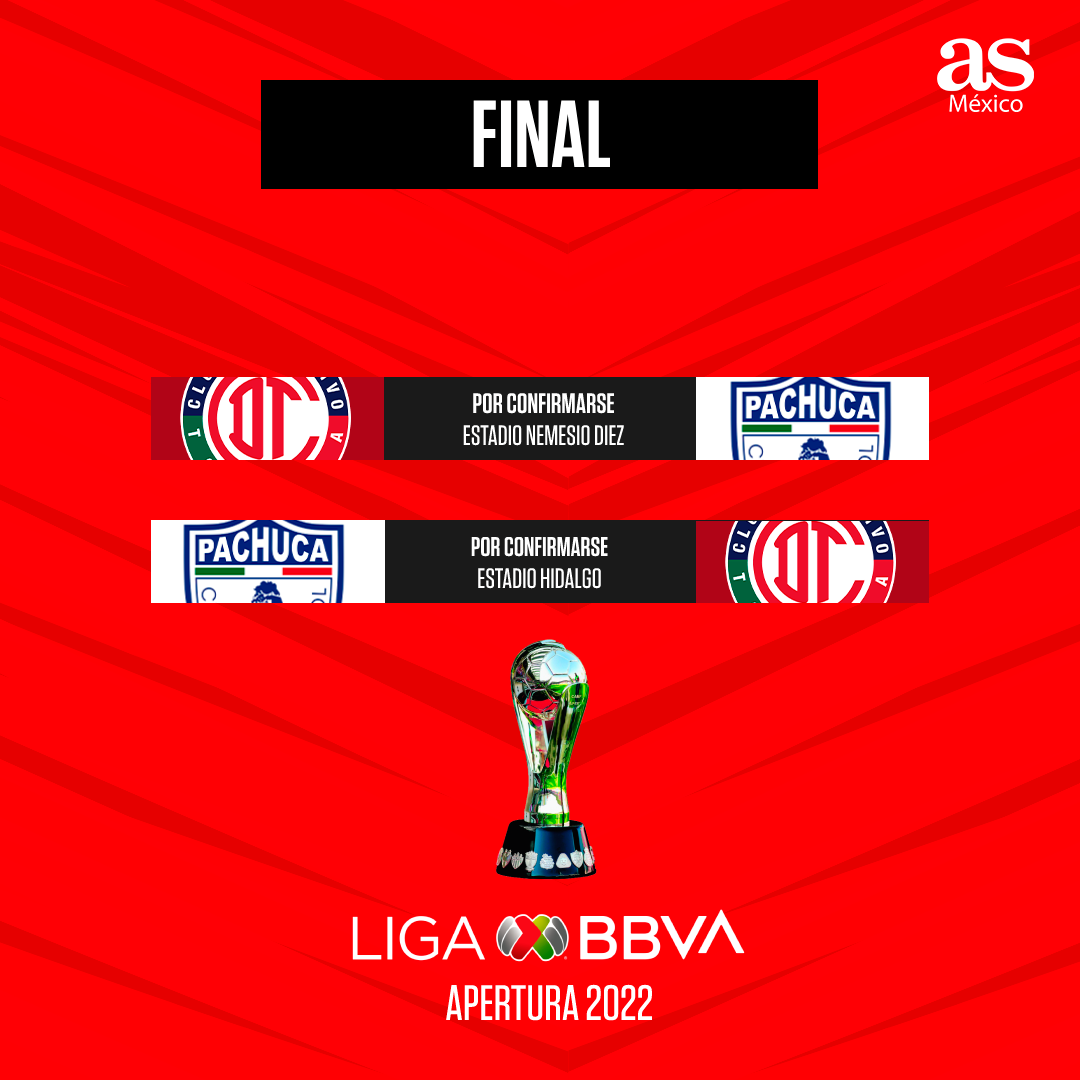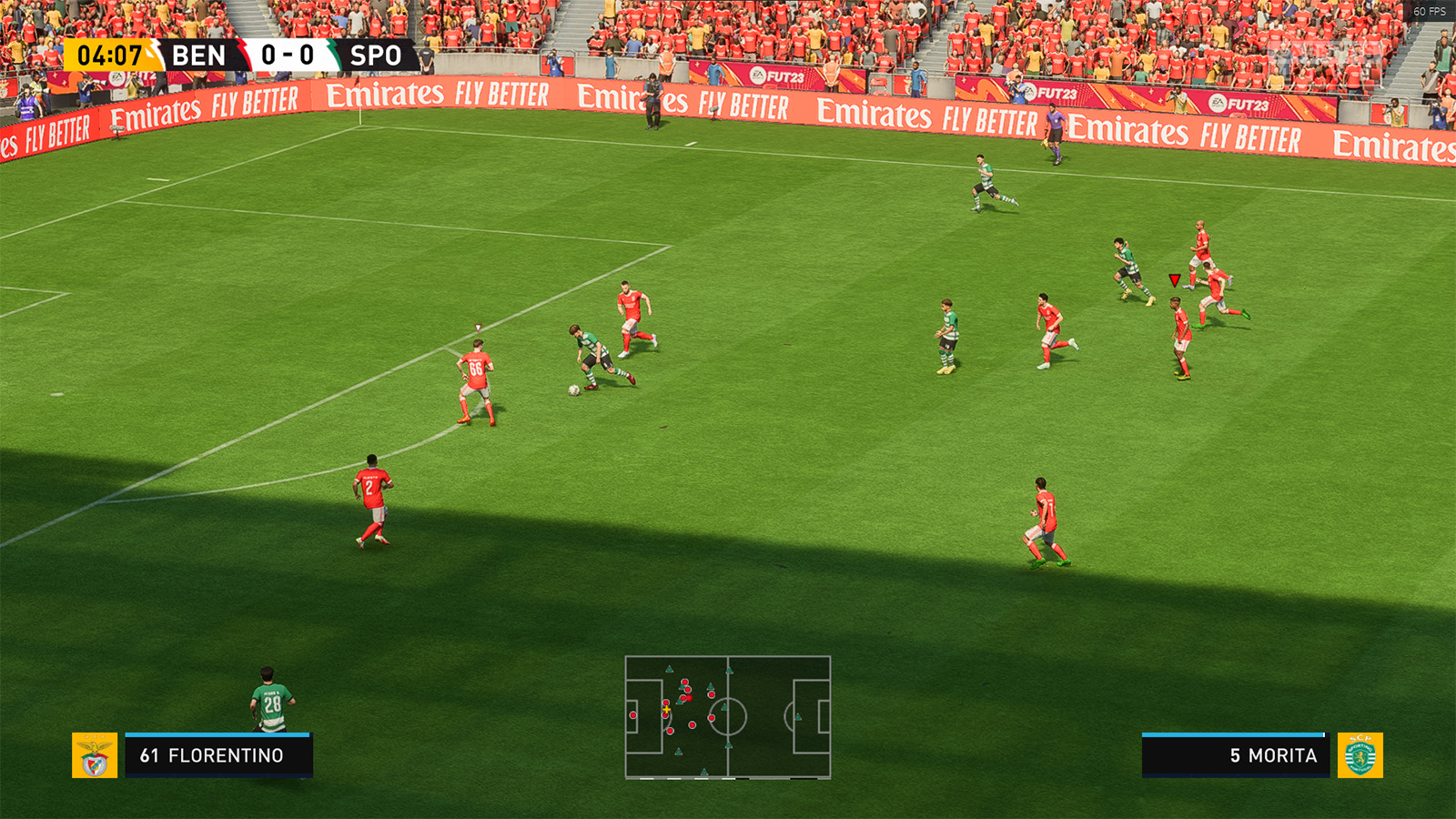The global launch of FIFA 23, the much-anticipated video game from American company Electronic Arts (EA), on September 26, 2022, brought with it a mix of excitement and a significant dose of disappointment for many fans, particularly those in Mexico and Latin America. While the game boasted unparalleled realism, featuring the biggest stars, leagues, and teams in football, a noticeable omission quickly became the talk of the gaming community: the absence of Liga MX. This unexpected turn of events left many wondering, "Whoa, Liga MX is not in FIFA 23?" and searching for answers about why their beloved domestic league and all 18 of its teams were excluded from what was typically a comprehensive club football offering.
For years, the inclusion of Liga MX in FIFA titles was a given, allowing fans to play with their favorite Mexican clubs and experience the vibrant atmosphere of the league. However, as FIFA 23 approached its release, whispers turned into confirmation, leaving a void for many dedicated players. This article delves deep into the simple yet crucial reason behind Liga MX's disappearance from FIFA 23, its impact on EA Sports and the gaming community, and what the future might hold for the league in the ever-evolving world of football video games.
Table of Contents
- The Unthinkable Absence: What Happened?
- The Konami Exclusivity Deal: eFootball's Gain
- Impact on FIFA 23 and EA Sports: A Noticeable Omission
- The Community's Response: Mods and Workarounds
- The Future of Liga MX in Gaming: A Possible Return to EA?
- The Bigger Picture: Licensing Battles in Football Gaming
- Why Licensing Matters: For Players and Publishers
- Navigating the Landscape: How Fans Can Still Enjoy Liga MX
The Unthinkable Absence: What Happened?
When FIFA 23 hit the shelves, the excitement was palpable. EA Sports, known for its extensive licensing portfolio, proudly showcased its ability to bring "the world's game" to life with over 19,000 players, 700+ teams, and 100 stadiums. They even introduced women's club football, a significant step forward for inclusivity in the series. However, for a substantial segment of the player base, particularly those in Mexico and across Latin America, the joy was quickly overshadowed by a stark reality: Liga MX was nowhere to be found. "Unfortunately for fans of the Liga MX and any of its teams, the association is not a part of FIFA 23," was the disappointing truth.
This absence was a shock to many. Some players recalled vague memories of a deal with PES (now eFootball) but "could have sworn that was to start next year and FIFA 23 would be the last we’d see Liga MX teams." The sudden exclusion of all 18 teams from Mexico's top division marked a noticeable omission in FIFA 23’s typically comprehensive club football offering. While FIFA 23 did include member teams and branding for Major League Soccer (MLS), the lack of Liga MX created a significant gap for fans who had grown accustomed to playing with their favorite Mexican clubs. The question on everyone's mind was clear: "Why is Liga MX not in FIFA 23?"
The Konami Exclusivity Deal: eFootball's Gain
The simple, yet profoundly impactful, reason behind Liga MX's disappearance from FIFA 23 lies in a strategic business move. "Sin más rodeos, la respuesta es una," – without further ado, there is one answer. "A partir del verano de 2022, la Liga MX tendrá un acuerdo de exclusividad con eFootball, el videojuego de Konami." This means that starting from the summer of 2022, Liga MX entered into an exclusive licensing agreement with Konami, the developer of eFootball (formerly Pro Evolution Soccer or PES). This deal grants Konami the sole rights to feature the league, its teams, and its players in their football simulation game.
This exclusivity is a significant blow to EA Sports and its FIFA franchise. The statement "EA perdió la licencia de la Liga MX y no salió en FIFA 23" succinctly summarizes the situation: EA lost the Liga MX license, and thus it did not appear in FIFA 23. This isn't a temporary hiccup; the sentiment among many is that "La Liga MX no va al FIFA 23 y tardará un buen rato en regresar a EA Sports, pues recientemente se firmó un contrato con Konami para estar en el eFootball, así que las esperanzas para los fanáticos de los videojuegos por ahora son nulas." The long-term nature of this contract with Konami means that hopes for Liga MX's swift return to EA Sports titles are, for now, non-existent. Konami has gambled that "eFootball will grow substantially in the coming years," and securing exclusive rights to a major league like Liga MX is a key part of that strategy.
Understanding the Shift: Why the Move?
The decision by Liga MX to enter an exclusive agreement with Konami's eFootball rather than renewing its long-standing partnership with EA Sports' FIFA is multifaceted. While the exact financial terms of the deal are not publicly disclosed, it's safe to assume that Konami offered a highly lucrative package to secure such a significant exclusive. For a league, securing a stable and substantial licensing revenue stream is paramount. Furthermore, aligning with a developer like Konami, which has been aggressively pursuing exclusive partnerships to bolster its eFootball title, might have presented a unique opportunity for Liga MX to become a cornerstone of a growing platform, rather than just one of many leagues in a dominant one.
From Konami's perspective, securing Liga MX is a strategic coup. In the fiercely competitive football simulation market, exclusive licenses are gold. They differentiate a game and provide a unique selling point that its competitor cannot match. For eFootball, which has been striving to regain market share from FIFA, adding a fully licensed Liga MX, including all its teams, players, and potentially stadiums, is a massive draw, particularly for the vast and passionate football fanbase in Mexico and Latin America. This move aims to significantly boost eFootball's player base and establish it as the definitive platform for Liga MX fans.
Impact on FIFA 23 and EA Sports: A Noticeable Omission
The "Impact on FIFA 23 and EA Sports" was immediate and significant. For a game that prides itself on offering "the world's game with unparalleled realism," the absence of an entire major league like Liga MX is a glaring hole. While EA Sports continued to boast an impressive roster of licenses, including over 19,000 players, 700+ teams, and 100 stadiums, the removal of Liga MX meant that a substantial portion of its global audience, particularly in key Latin American markets, felt underserved. EA's press releases often highlighted the sheer quantity of licenses, but the quality of the experience for specific regional fanbases was undeniably affected.
The absence of Liga MX marked a noticeable omission in FIFA 23's typically comprehensive club football offering. For EA, losing such a prominent league, especially one with a dedicated fanbase, represents a strategic setback. It forces players who primarily follow Liga MX to either switch games, settle for an incomplete experience, or seek out community-made solutions. This licensing battle highlights the increasing fragmentation of sports game licenses, where no single publisher can claim to have every major league and competition, leading to a more complex landscape for consumers.
The Player Experience: What Fans Missed
For the average player, the impact of Liga MX's absence in FIFA 23 was profound. Fans in Mexico and Latin America, who were surely "ansious to play with their favorite teams," found themselves unable to do so. This wasn't just about missing a few teams; it was about the inability to engage with their local football culture within the game. Imagine not being able to play as Club América, Chivas, Tigres, or Cruz Azul – iconic clubs with massive followings. The domestic top flight's fans were deeply disappointed to see that Liga MX clubs failed to feature in the latest version of the hit video game.
Beyond just playing matches, the absence affected various game modes. Career Mode players couldn't manage a Liga MX club, and Ultimate Team enthusiasts couldn't build squads around their favorite Mexican stars in their authentic club kits. While FIFA 23 continued to offer a robust experience with other leagues and the exciting addition of women's club football, the void left by Liga MX was significant for its dedicated fanbase. This situation underscored how deeply integrated real-world football licenses are into the core appeal and immersive experience of sports simulation games.
The Community's Response: Mods and Workarounds
In the face of official exclusion, the dedicated gaming community, particularly on PC, often rises to the occasion. The absence of Liga MX in FIFA 23 was no exception. "Fans of Liga Promerica (CR), Liga MX and Concacaf Champions League can now play with their favourites in FIFA 23 PC," thanks to the tireless efforts of modders. These passionate individuals and groups took it upon themselves to rectify the omissions, demonstrating the power and ingenuity of the gaming community.
One notable example is the "LTA Mod (LatinAmerican Mod)" developed by "FIFA Ecuador Modders y un servidor." This group undertook a "titánico esfuerzo para poder regresar la Liga MX a FIFA 23 en su version de PC." Their work went beyond just adding the teams; they aimed to give the league "mucho mejor trato del que pudo haberle dado EA mientras tuvo la licencia." This included ensuring "todos los kits nuevos, transferencias, Concachampions," and even full licensing for all South American and Concacaf leagues, Copa América, and the World Cup within the mod. Another significant community effort, the "International Expansion Mod 23 (IEM 23)," also includes features like fully unlocked and licensed stadiums and competitions, complete Brazilian Serie A updates, and all teams licensed within the mod, further enriching the PC experience for those seeking a more complete football world.
Bringing Liga MX Back: The Power of PC Mods
The ability of PC modders to reintroduce Liga MX into FIFA 23 highlights a crucial aspect of the PC gaming ecosystem: its openness and flexibility. While console players are largely at the mercy of official licensing agreements, PC users can often leverage community-created content to enhance or customize their gaming experience. These mods are not just about adding missing teams; they often involve meticulous work to update rosters, kits, player faces, and even stadium details, striving for a level of authenticity that sometimes surpasses the official releases in specific areas.
The existence and popularity of these mods underscore the demand for Liga MX content within the FIFA framework. It also serves as a testament to the dedication of fans who are willing to go to great lengths to play with their preferred teams. While these community efforts provide a valuable workaround, they also subtly critique the limitations imposed by exclusive licensing deals, demonstrating that the market desires a more comprehensive offering than what official agreements sometimes allow.
The Future of Liga MX in Gaming: A Possible Return to EA?
The question of Liga MX's future in football video games, particularly regarding a potential return to EA's platform, is complex. While the current exclusive deal with Konami is firm, the gaming landscape is constantly shifting. The statement "The league has a full license with Konami, the maker of eFootball, and may return to FIFA in the future" offers a glimmer of hope. However, it's tempered by the reality that "Liga MX is gambling that eFootball will grow substantially in the coming years." If eFootball achieves significant growth and market penetration, Liga MX might see less incentive to return to EA.
Adding another layer of complexity is the evolution of EA's own football franchise. "Either way, this is the last FIFA most likely since EA & FIFA didn’t renew their deal." Indeed, FIFA 23 was the final installment under the "FIFA" brand name. EA Sports launched its new football game, "EA Sports FC 24," on September 29, 2023, marking a new era for the publisher. This split means that even if Liga MX were to return to EA, it would be to "EA Sports FC," not "FIFA." The dynamics of future licensing negotiations will undoubtedly be influenced by the success of EA Sports FC and Konami's eFootball in their respective markets.
Beyond FIFA 23: EA Sports FC and What's Next
The transition from FIFA to EA Sports FC signifies a major strategic pivot for EA. While the core gameplay experience and many existing licenses (like the Premier League, La Liga, Bundesliga, and MLS) are expected to carry over, the rebranding allows EA to forge its own path, free from the constraints and costs associated with the FIFA brand name. This new identity could potentially open doors for different types of licensing deals in the future, or it could solidify existing partnerships. For Liga MX, the decision to eventually return to EA's ecosystem would depend on the perceived value proposition from EA Sports FC versus continued exclusivity with Konami.
The landscape of football gaming is increasingly becoming a battleground of exclusive content. As Konami invests heavily in securing exclusive league rights, EA Sports FC will likely continue to focus on its vast array of individual club and player licenses, alongside major competition licenses like the Champions League. The future of Liga MX in either game will be a testament to which publisher offers the most compelling financial and strategic partnership for the league, balancing immediate revenue with long-term growth and exposure.
The Bigger Picture: Licensing Battles in Football Gaming
The saga of Liga MX and FIFA 23 is just one example of the intense licensing battles that define the football video game industry. For decades, EA's FIFA series held a near-monopoly on official licenses, boasting an unparalleled roster of leagues, clubs, and players. Konami's Pro Evolution Soccer, while often praised for its gameplay, consistently struggled to compete on the licensing front, leading to generic team names and kits for many clubs.
However, in recent years, Konami has adopted an aggressive strategy, investing heavily in securing exclusive partnerships. This includes not just Liga MX, but also other prominent clubs and leagues, aiming to carve out its niche in the market. This shift creates a more fragmented experience for players, who might now need to own multiple games to access all their favorite teams and competitions. It also signifies a power shift, as leagues and clubs gain more leverage in negotiating lucrative deals with competing publishers. The ultimate goal for these publishers is to offer "the world's game" experience, but increasingly, that experience is being split across different titles.
Why Licensing Matters: For Players and Publishers
For players, official licenses are crucial for immersion and authenticity. Playing with real team names, kits, badges, and player likenesses significantly enhances the gaming experience. It allows fans to connect with their favorite clubs and players in a virtual environment that mirrors reality. The absence of a league like Liga MX, therefore, directly impacts the enjoyment and replayability for its fans, as they lose the ability to fully immerse themselves in their preferred football ecosystem within the game.
For publishers like EA and Konami, licenses are the lifeblood of their football simulation titles. They are a primary marketing tool, attracting players who want to play with their favorite teams. Exclusive licenses, in particular, serve as powerful differentiators in a highly competitive market. They allow a publisher to claim unique content that its rival cannot offer, potentially driving sales and player engagement. The cost of these licenses is immense, but the perceived value in terms of market share and brand loyalty makes them a worthwhile investment. The battle for licenses is, in essence, a battle for the hearts and wallets of football fans worldwide.
Navigating the Landscape: How Fans Can Still Enjoy Liga MX
Despite the official absence of Liga MX from FIFA 23, fans are not entirely without options. The most straightforward path for those who wish to play with fully licensed Liga MX teams is to engage with Konami's eFootball, which holds the exclusive rights. This game offers a different gameplay experience, but it is the official home for Liga MX content in the video game world.
For PC players of FIFA 23 (and now EA Sports FC), community-made mods remain a powerful alternative. As highlighted earlier, dedicated modders have invested "a titanic effort" to bring the league back, complete with updated kits, transfers, and even competitions like the Concacaf Champions League. These mods, while requiring some technical know-how to install, offer a comprehensive and often highly detailed recreation of the Liga MX experience within EA's game engine. While not officially supported, they demonstrate the passion of the community and provide a viable workaround for those unwilling to switch games. Ultimately, the choice rests with the fan: embrace the official licensed product in eFootball, or leverage the power of the modding community to bring Liga MX back to EA's platform.
The situation surrounding Liga MX in FIFA 23 serves as a compelling case study in the evolving landscape


